Into Cambodia/前進高棉

I first came to Cambodia on February 10, 2015. I was there for an international workshop (February 9-13) on "Sustainable Water Technology: Appropriate technology for water in Asia", which was organized by Scientists and Engineers without Border (SEWB), Korea. The whole one day forum on February 12 was held in the campus of National Polytechnic Institute of Cambodia (NPIC), Phnom Penh. The field visits include suburban sites of Siem Reap and Phnom Penh cities. After this workshop was over, I arranged my free time (February 14-17) to visit Angkor Wat in Siem Reap.

Academic forum
In the academic forum, I myself presented this topic (PPT here): "Improving household water filter for arsenic removal in Cambodia: localized production and distribution of granular iron oxide". In regard to the issue of water and sanitation in Cambodia, I think there’re several aspects which can be explored in order to help meet its urgent needs. To name three of these, any processes are needed to take care of the problems of algae, waterborne pathogens, and arsenic. Not only do these processes need to be technologically appropriate and economically affordable, but also environmentally sustainable, to be applied in a developing country like Cambodia. For example, there’s one clever water purification product of gravitational membrane filtration demonstrated in the forum. It looks like medical syringe injection of drugs or nutrients. Inside this syringe-like cartridge are three components: activated carbon, pre-filter, and hollow fiber membrane. According to its company’s test data, its removal performance for bacteria and turbidity is extremely good. Apparently, it’s easy to carry, to operate, and to maintain. But, is it affordable and sustainable? This is what really challenges the field and academic researchers! I am very confident that SEWB can play an influential role to tackle the addressed problems in the near future because of its professional, compassionate and enthusiastic members.

Technical tour
The organizer (SEWB) and iWc (Innovative Water Center) arranged quite a few of field visits, including ceramic water filter (CWF) manufacturing plant, wetland, school-based water purification system and toilet system. Technologically speaking, these site visits are not appealing. But, it is the inspiring efforts and stories behind these site projects that really count.
For example, the CWF's were produced by Resources Development International Cambodia (RDIC) to "provide affordable high quality drinking water, at a household or classroom level, for communities who are otherwise without access to safe drinking water." Because of its significant contribution in dropping down diarrhea illness, the CWF was awarded "2008 Project Innovation Award Grand Prize" by International Water Association (IWA).
Ceramic water Filter manufacturing plant
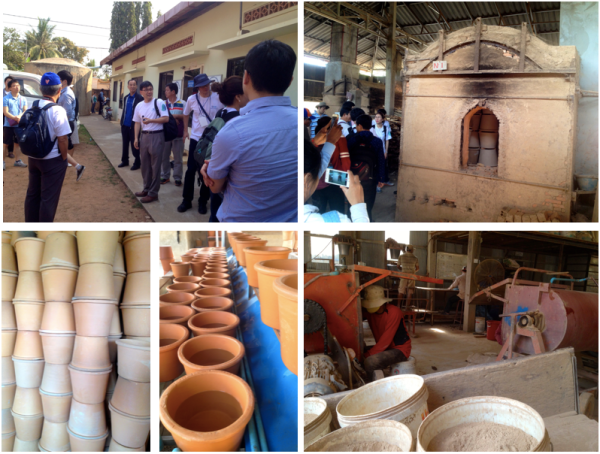
The next, we moved to another site of a natural wetland. Observing from the spacious terrain, it appears that the size of this wetland is reducing. The reason can be booming of aquatic plants inside, due to rich nutrients input. As we moved to another side of this wetland, we found there’s continuous influent of domestic wastewater all coming from the nearby villages. So, you may imagine the dead end of this wetland. As a senior Korean scholar has put it, “we are concerned about their health, but they seem to be more concerned about their wealth", which one is their first priority? I think only people there have the last word.
Natural wetland

It’s highly admirable that Korean scholars have such compassion to resolve the problems of water and sanitation in the rural communities of Cambodia, especially for the sake of school children or villagers. The workshop participants were led to four sites to see water purification system, toilet system and campus wastewater treatment system, which were installed in the kindergarten, primary school and NPIC. After these field visits, I would say children there are so blessed because of those international water experts.
Water purification system installed in a kindergarten
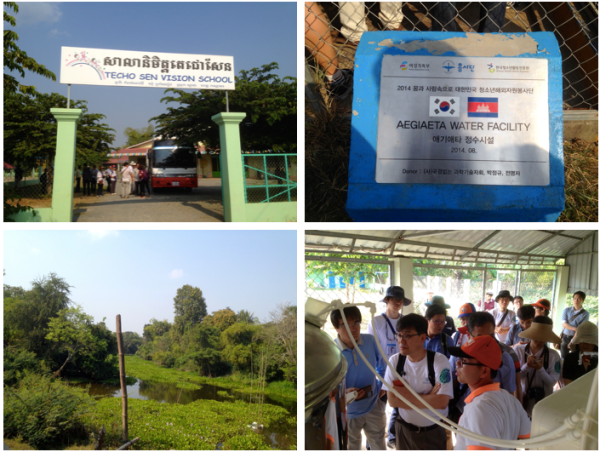
Water purification system installed in a primary school

iWc toilet waste management system installed in a primary school
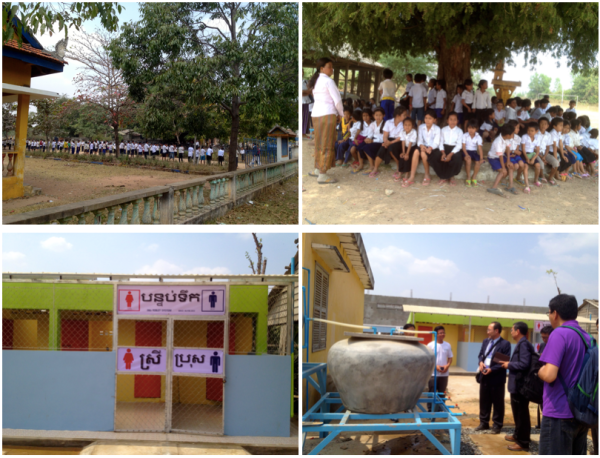
Campus wastewater treatment system (rock filter plus wetland/sand filter)
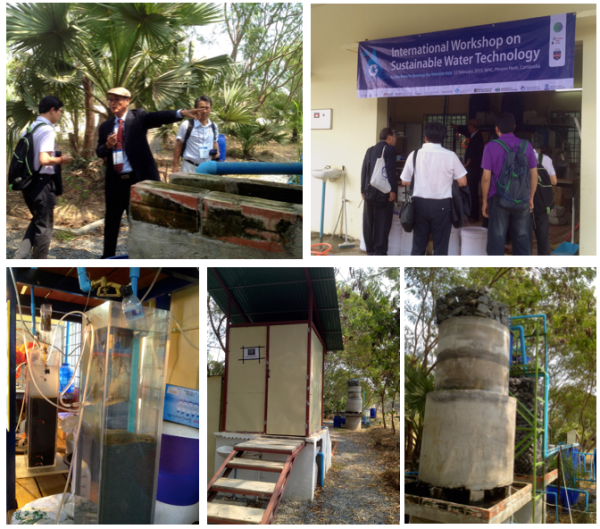
Cultural tour
As usual, I will arrange morning jogging whenever I get to a new place in a foreign country, especially in a place with rivers or lakes. So, I jogged twice in Phnom Penh (PP) and once in Siem Reap (SR). The road condition in PP was quite bad when jogging along Mekong river. In contrast, when running along Siem Reap River and later on turning into the forest road, it was felt much, much more comfortable I would say jogging is always an easier and better way to get to know a place or a city faster. On top of this, I could also take plenty of good photos since I have actually become a photo-runner.
Morning jogging in Phnom Penh and Siem Reap

Michelle and I took some free time walking around the neighborhood of our staying hotel, when we were in Phnom Penh. Some spots we didn’t even know of their names. At any rate, whatever we saw and ate were all fresh and special to foreigners like us. As was strongly recommended, royal palace and central market were the two we should go to. So there we went. We did see something interesting on the street, and indeed the golden royal palace was magnificent.
Phnom Penh City

Royal Palace
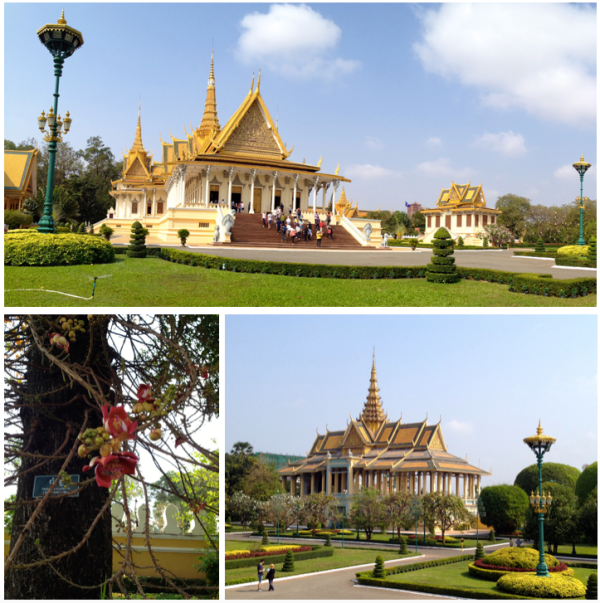
People have kept telling me that Angkor Wat should be a must to visit if I were in Cambodia. So, in this trip of Cambodia, I specially arranged staying in Siem Reap for 3 overnights. On the second day in Siem Reap, I woke up quite early and started to jog at 5:01 am. Totally I ran 7.52 km from my hotel to Angkor Wat, and it took me 49’45" to get there. When I was in the Angkor Wat area, the sky was still dark. I decided to wait and stay until the daybreak so I could take some good photos. Later on, I was too exhausted to run back to my hotel, so I took a motorbike at a price of 10000 Cambodian dollar. With my being there in Angkor Wat early in the morning, I proposed to Michelle my plan of touring around Angkor Wat, as if I were a local professional tour guide. Then we spent one whole day there, based on my proposal. Of course, I took many photos up-and-down at any possible spots in the Angkor Wat.
Angkor Wat
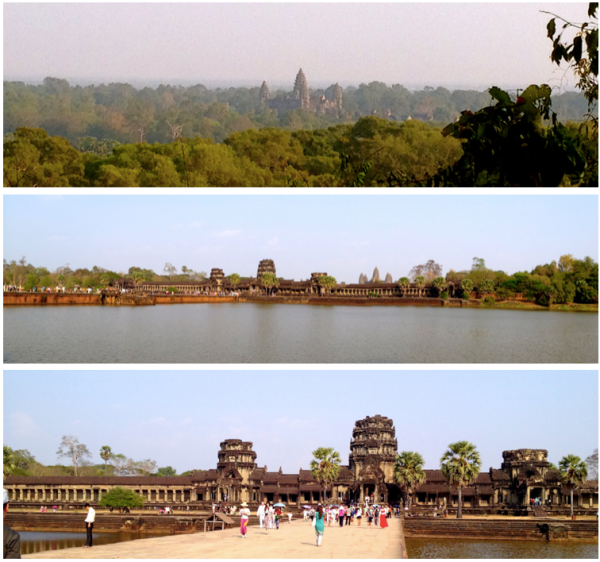
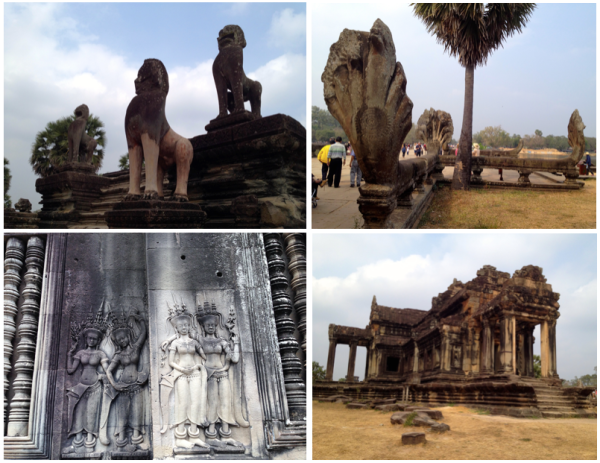

I got some idea about Tonle Sap Lake when I prepared my talk for the workshop. It’s located in the upstream of Tonle Sap River, which meets Mekong River in Phnom Penh. So, two things were in my mind before coming to Cambodia. First, I wanted to jog along Tonle Sap River when staying in the Landscape Hotel, Phnom Penh. Second, I wanted to pay a good visit to the Lake, even jogging along the lakeside, when getting to the city of Siem Reap. It ended up that we went to Tonle Sap Lake early in the morning, around 6 am, on the day of flying back to Phnom Penh from Siem Reap. The first attractive spot there was the morning market by the lake, where you could buy live chickens and ducks and seasonal local fruits. In addition, If you see the photos I took, you will find the water had 2 colors, yellow-brown and black. It’s yellow-brown, I guess, because of severe soil excavation along the lakeside or some other reasons which I don’t know. What about the black color, plus very bad smell? It’s all because of domestic wastewater discharged directly from the households. It’s so sad to see people making a living there in such a worsening environment.
Tonle Sap Lake

Closing Remark
- It’s such a good opportunity for me to participate this international workshop in Cambodia. I am thankful for the SEWB’s invitation and iWc’s guiding tours.
- See more photo albums in detail here:
